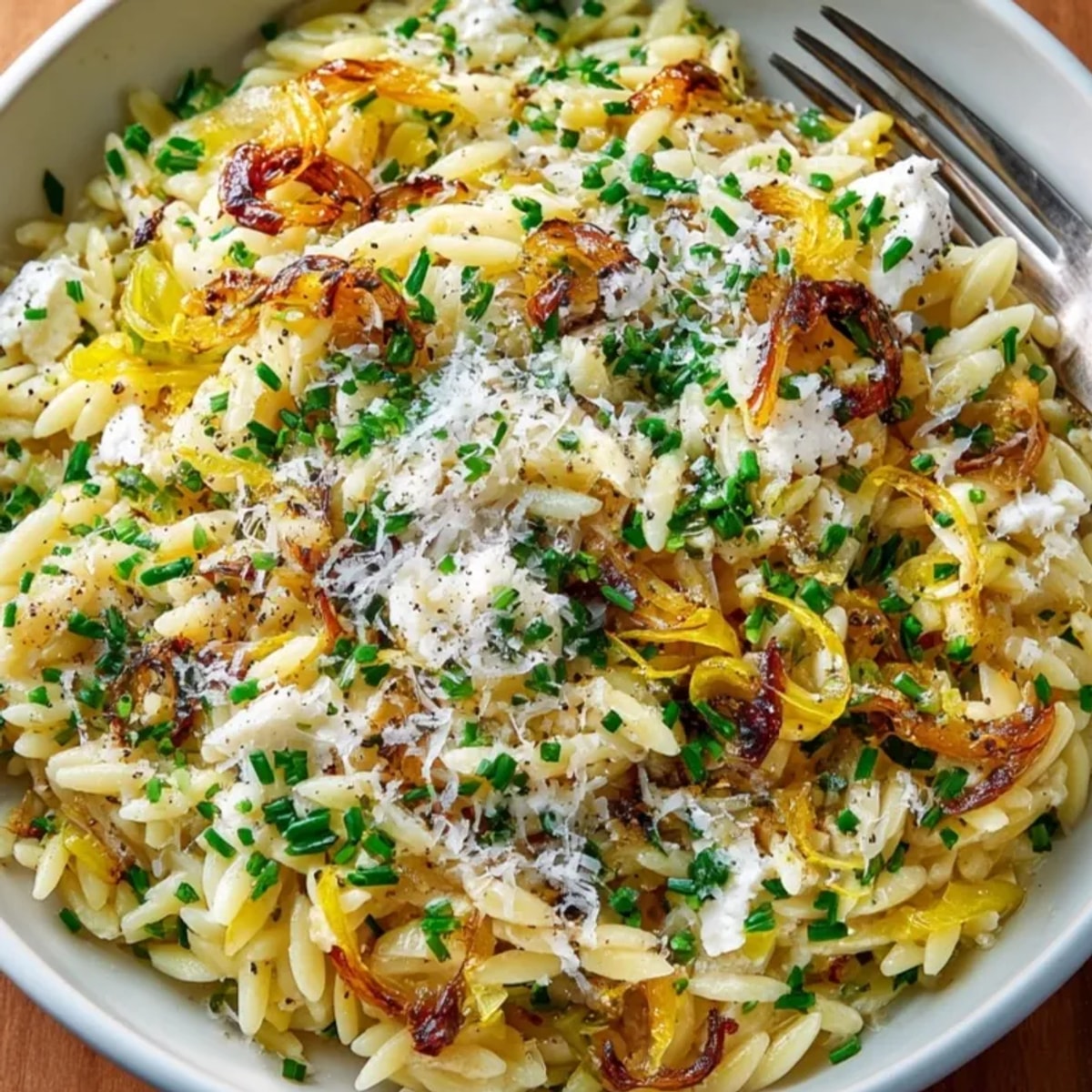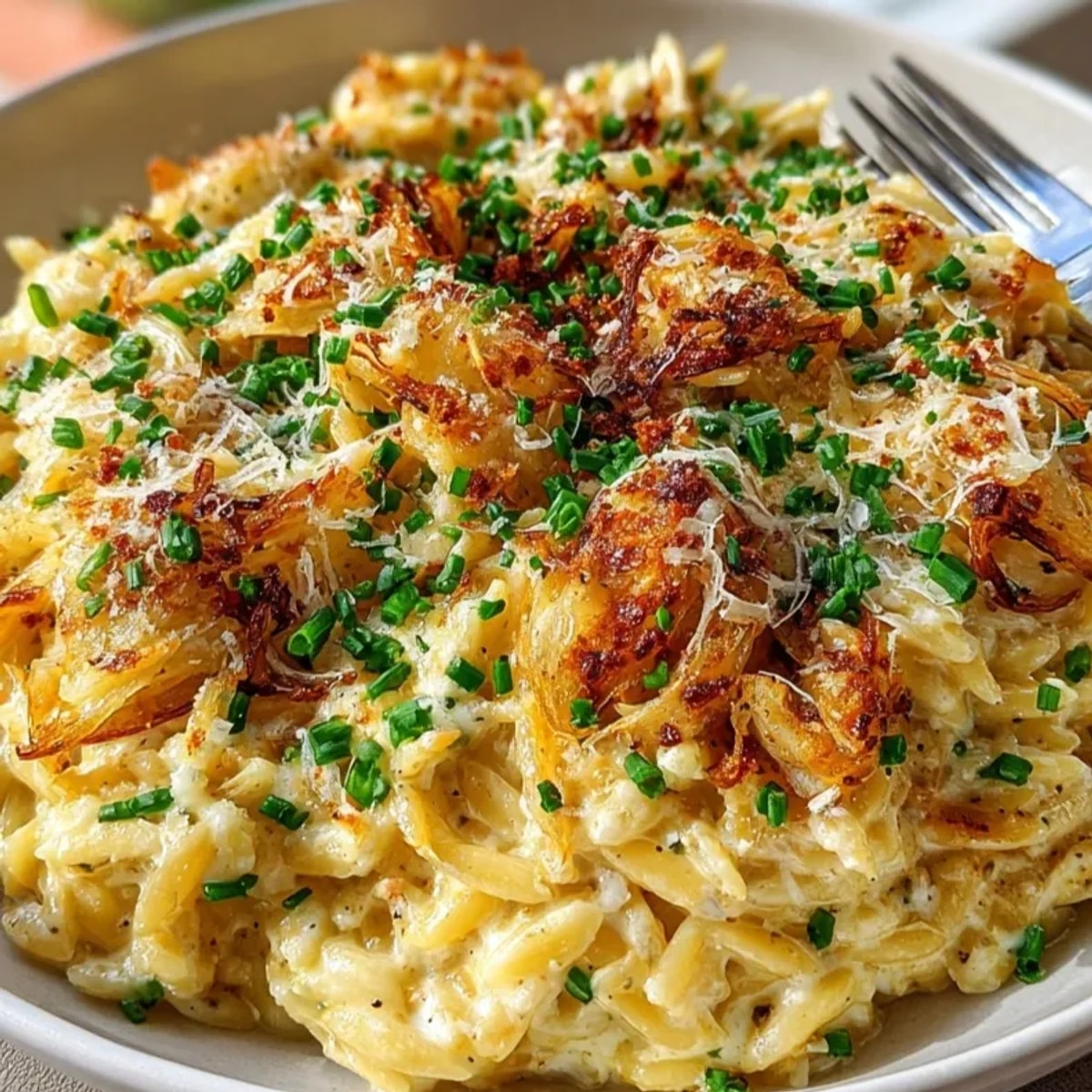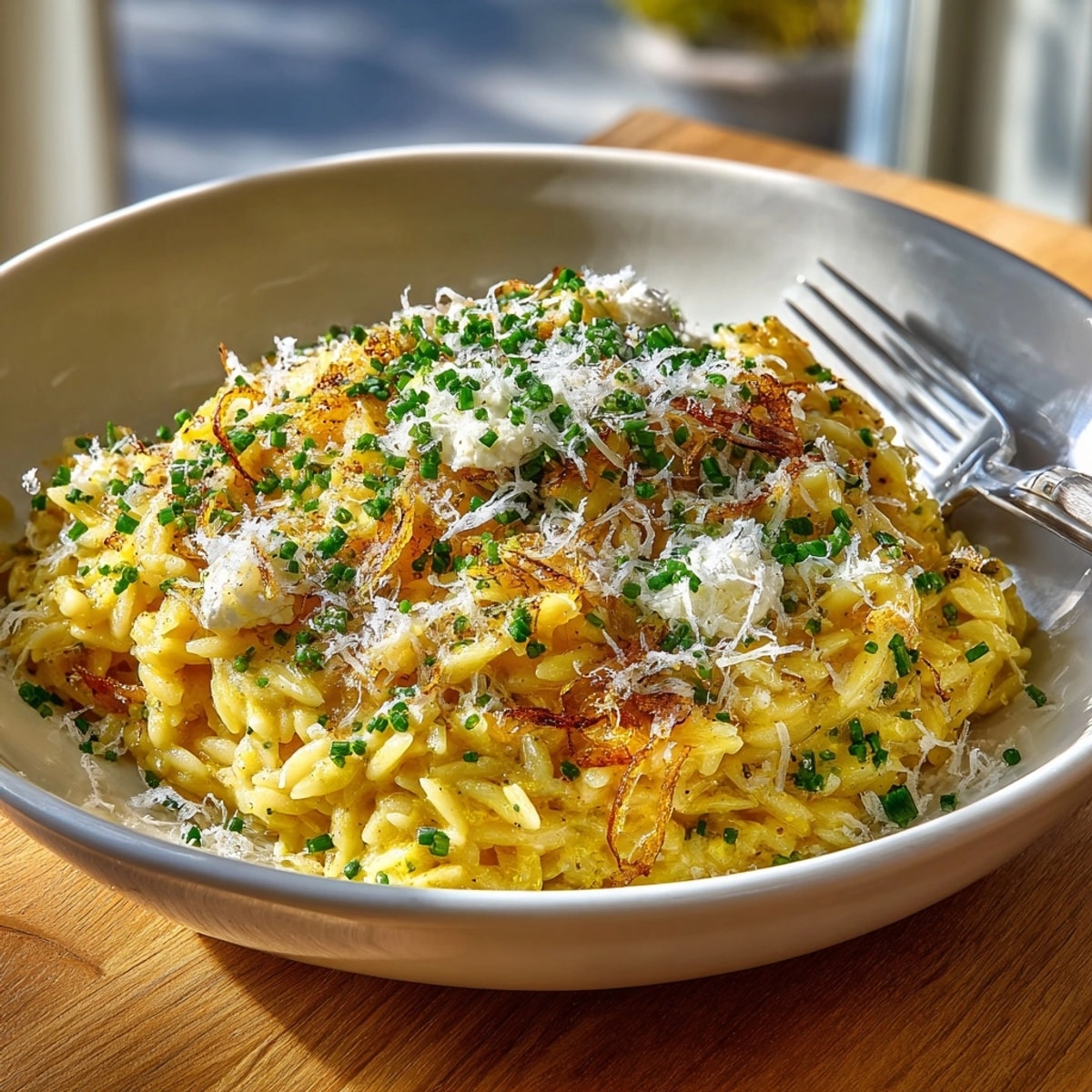 Save to Pinterest
Save to Pinterest This orzo with caramelized onions and goat cheese is the sort of dish I turn to when I need something both cozy and elegant. The sweet deep flavor of slowly cooked onions wraps around delicate orzo pasta while tangy goat cheese melts in for creaminess. It is just as fitting for a casual weeknight as it is for impressing guests with a Mediterranean-inspired side.
The first time I cooked this was on a chilly evening when I had little but onions and pasta left. I loved the way the goat cheese turned everything silky and rich. Now this dish is on repeat when I crave something extra comforting.
Ingredients
- Orzo pasta: brings a light chew that holds the creamy sauce beautifully. Look for high-quality brands for the best texture
- Vegetable broth: infuses orzo with subtle savory depth. Choose a low-sodium option so you can control the seasoning
- Yellow onions: are essential for deep caramelized flavor. Pick large firm onions with tight skins
- Olive oil and unsalted butter: create richness and help onions caramelize evenly. Use a fruity olive oil for extra flavor
- Salt and freshly ground black pepper: draw out the onions’ sweetness and balance the goat cheese
- Sugar: optional but helps the onions brown deeply. Use if your onions are sharp or not very sweet
- Fresh goat cheese: lends a tangy creaminess. Go for logs without rind and look for local producers when possible
- Heavy cream: enriches the sauce and helps bind the cheese to the pasta. Seek out fresh cream for the smoothest result
- Parmesan cheese: boosts umami but can be skipped for a milder flavor. Freshly grated is best here
- Fresh chives or parsley: brighten the whole dish with fresh herby flavor. Choose vibrant unwilted herbs
- Baby spinach or roasted cherry tomatoes: are optional for color or extra nutrients
Instructions
- Prepare the Onions:
- Start by heating olive oil and butter in a large skillet over medium heat. Add the sliced yellow onions along with salt and sugar. Let them cook slowly for twenty to twenty five minutes stirring often. Reduce the heat if they show signs of burning. You want them deep golden brown and silky which unlocks their sweetness and depth
- Cook the Orzo:
- While the onions are caramelizing set a medium saucepan of vegetable broth to a boil. Tip in the orzo and cook as directed on the package which is usually eight to ten minutes. Stir now and then so the pasta cooks evenly and does not stick. When the orzo is just al dente drain it but save half a cup of the broth for finishing later
- Combine Everything:
- Fold the cooked orzo into the skillet with the caramelized onions. Sprinkle in the crumbled goat cheese and pour over the heavy cream then add parmesan if you are using it. Toss everything together gently so the cheese melts into a creamy sauce. Splash in some reserved broth if the mix looks too tight or sticky
- Season and Serve:
- Finish with more freshly ground pepper and remove from the heat. Scatter chopped chives or parsley over the top just before serving for a pop of fresh color and flavor
 Save to Pinterest
Save to Pinterest My favorite part is how goat cheese brings an irresistible tang that cuts through the sweetness of the onions. I once made this for my family’s Sunday dinner and now I get requests for it on even the busiest weeknights. The caramelizing step takes patience but fills the whole kitchen with warmth.
Storage Tips
Keep leftovers in a tightly sealed container in the fridge for up to three days. To reheat gently warm in a skillet over low heat with a splash of vegetable broth or cream to loosen everything back to silky. This dish does not freeze well due to the cream and cheese which can split when thawed
Ingredient Substitutions
If goat cheese is not your thing swap in feta for a saltier flavor. Use creme fraiche or even Greek yogurt for the creamy base in place of heavy cream if you want it lighter. For a vegan version go for plant-based cheeses and dairy substitutes and use olive oil only
Serving Suggestions
Serve as a hearty main course with a crisp green salad or alongside lemon roasted chicken and grilled zucchini for something more festive. It also makes an elegant side for any Mediterranean-inspired menu
Cultural and Historical Context
Orzo is a tiny pasta shaped like grains of rice and is popular in Greek and Italian cooking. Caramelized onions are a beloved staple throughout the Mediterranean where they bring natural sweetness to many humble dishes. Goat cheese has roots in the region too adding tang and creaminess to many classics
Seasonal Adaptations
In spring add peas or asparagus for color and snap. In summer stir in roasted cherry tomatoes for juicy bursts. In fall or winter toss in sautéed mushrooms or wilted greens for earthy richness
 Save to Pinterest
Save to Pinterest This orzo is one of those simple meals that feels effortless but tastes special. It is the go to dish when I need something reliable and cozy with just a bit of flair.
Common Recipe Questions
- → What pasta type works best for this dish?
Orzo is ideal, offering a rice-like shape that blends well with creamy sauces and caramelized onions.
- → How do I properly caramelize onions?
Slice onions thinly and cook slowly in olive oil and butter, stirring often, until deep golden and tender.
- → Can I substitute another cheese for goat cheese?
Feta makes a good substitute, offering tang and creaminess. Adjust quantity to your taste preference.
- → What herbs pair well in this dish?
Fresh chives or parsley add bright flavor and color. Basil or thyme can also complement the creamy pasta.
- → Is this suitable for gluten-free diets?
Orzo is typically wheat-based, but gluten-free brands are available. Check labels to ensure suitability.
- → What should I serve alongside this dish?
It pairs nicely with roasted chicken, grilled vegetables, or a crisp green salad for a complete meal.
- → How do I adjust the creaminess?
Increase heavy cream or reserved cooking liquid for more creaminess, or decrease for a firmer texture.